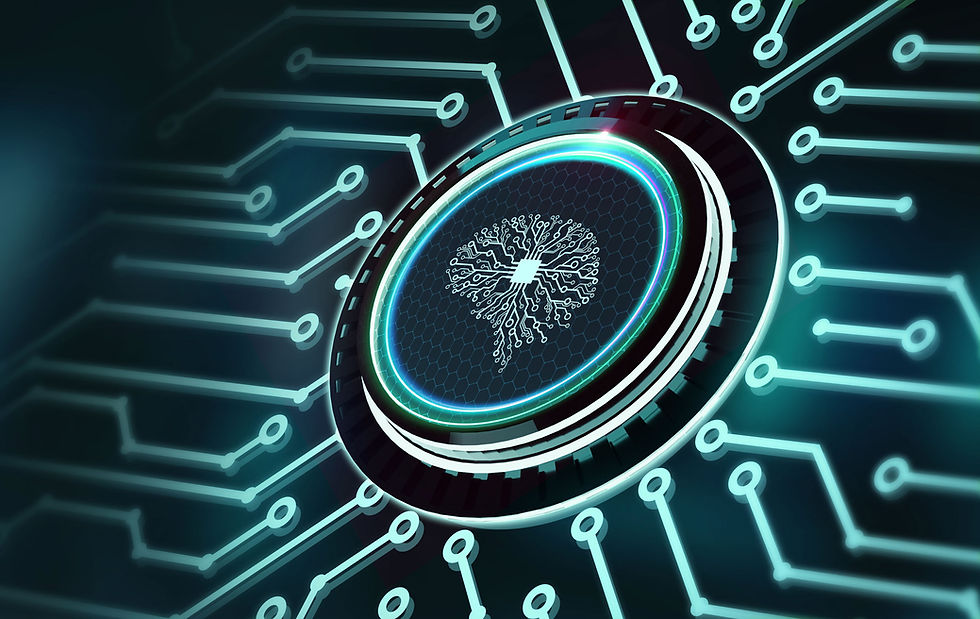3D Bioprinting- Hope for the future?
- Kaya Patel
- Jan 5, 2024
- 4 min read
Updated: Jan 8, 2024
Last year, the consent rates for organ donation within the UK fell from 66% to 62%, increasing the problem of the shortage of organs available for transplantation as organ failure increases. This might seem like a small change, however it results in over 3000 potential transplant opportunities being missed. Could there be a way in the future to synthetically make organs? 3D bioprinting is the process by which biological materials, including living cells and nutrients, are layered to form 3D structures, such as printed organs. In the future, synthetic organs could be used to decrease the waitlist time for transplants, increase the quality of life of those waiting, and reduce the insufficient organ supply.
How does bioprinting work?
So, how can we create an organ using a printer? Before the process can begin, a 3D model of the organ to be made is required. Scientists can use 3D medical images - such as MRI scans - and computer-aided design (CAD) to create a unique 3D model of the patient’s organ. Next, the right bio-ink must be made up so that it can be used in the printing process. Bio-inks are living inks, containing cells and biomaterials, that are used in the 3D printing process to make the organ, as they can generate structures similar to those of the tissues in our bodies. The cells used are either healthy cells, taken from the patient’s organ, or stem cells (undifferentiated cells) that can be directed to specialise into a specific cell type.
Within the bio-ink, the cells are suspended in hydrogel, which has high degradability and biocompatibility with our bodies. This is important as in normal tissues, cells secrete non-living material which holds them together, called extracellular matrix (ECM). The scaffolding made of bio-ink mimics the ECM, providing a surface for cells to thrive. Natural ECM materials, such as collagen, are used to enhance the structural integrity of the 3D bioprinted organ. Over time, the scaffold degrades in the body and cells produce ECM. During printing, bio-ink is deposited in layers, following the 3D design. After the organ has been printed, a process called cross-linking solidifies the bio-ink. The print is then incubated inside bioreactors, which create a favourable environment for tissue growth. Cells differentiate and self-assemble within the scaffold.
History of Bioprinting
In 1999, the first bioprinted organ, a bladder, was made from the patient’s own cells and implanted. A sample of cells lining the walls of the bladder was obtained and grown in a culture medium. A scaffold, designed at Wake Forest University, was colonised with cells, thus creating a synthetic bladder. During surgery, it was implemented into the patient and over time the scaffold degraded, allowing the bladder tissue to integrate into the body. This was able to happen without the organ being rejected and attacked by the patient's immune system as his own cells were used.
Organ Transplants
An organ transplant is the removal of an organ from a donor and replacing a failing organ of the recipient. The demand for organ transplantation has rapidly increased over the past few years due to increased organ failure but also due to the rising success of transplantations. Due to the limited number of organs donated, the current demand for transplants is becoming increasingly difficult to meet, resulting in the increase of patients on the waiting lists. From April 2022 - to March 2023, the highest organ in demand for transplantation in the UK was the kidney, where 2349 out of 5655 patients received a transplant, and there were 281 deaths of patients on the waitlist.
As a result of the shortage of organs, many patients were deprived of having a better quality of life, or even having one. The waitlist generally varies from a few months to a few years for numerous reasons. Firstly, it depends upon the number of organ donors. Furthermore, to reduce the risk of rejection from the body, the organ donor must be of similar size, same blood type and be within a certain distance, as organs cannot survive for extended periods outside the body. As the organ is from a donor, the patient’s immune system recognises it as “foreign” tissue and attacks it, so recipients usually take a combination of 2 or 3 different immunosuppressants in the long term, which typically results in an increased risk of infections. Despite transplants having well-developed infrastructure, the system is imperfect since there are still thousands of patients waiting far too long to be treated.
Pros & Cons of Bioprinting
There are many advantages of 3D bioprinted organs compared to traditional organ transplants.
• Bioprinting offers a solution to the organ shortage from donors as it provides an alternative source of organs, resulting in reduced waiting times for patients requiring a transplant.
• Due to the use of CAD, the unique needs of patients can be matched, improving biocompatibility when it is transplanted, which reduces the likelihood of rejection. Rejection is further reduced as autologous cells (the recipients’ cells) used are recognised by the body.
Although bioprinting offers a solution to the shortage of organs, there are also many disadvantages to bioprinting.
• Organs are made up of complex tissues, meaning that further research is required to be able to print such intricate features.
• Organs require vascularisation to obtain nutrients in the blood necessary for their survival, however printing this has not been achieved yet and is hindering its use in making organs.
Conclusion
Despite the technology and infrastructure of bioprinting still being developed, in the future it could address the issues of the long waiting lists and rejections that arise from transplants. Although it is still in its early experimental stages, as technology is developing, it offers hope for a promising future within organ transplantation and the millions awaiting life-saving transplants.


